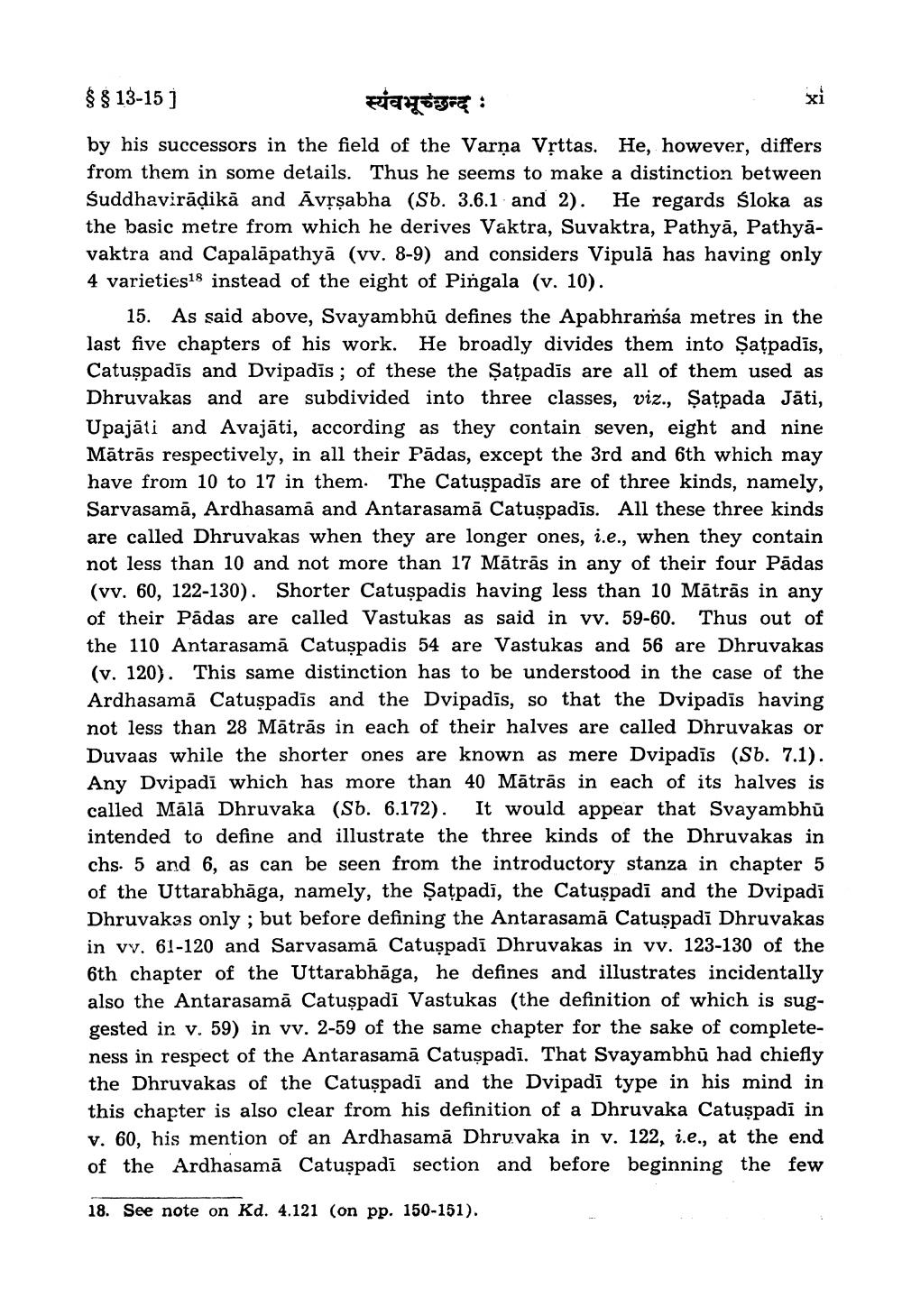________________
$ $ 13-15 ]
स्यवभूच्छन्द:
by his successors in the field of the Varņa Vrttas. He, however, differs from them in some details. Thus he seems to make a distinction between Suddhayirāļikā and Āvrsabha (Sb. 3.6.1 and 2). He regards sloka as the basic metre from which he derives Vaktra, Suvaktra, Pathyā, Pathyavaktra and Capalapathyā (vv. 8-9) and considers Vipulā has having only 4 varieties18 instead of the eight of Pingala (v. 10).
15. As said above, Svayambhū defines the Apabhramśa metres in the last five chapters of his work. He broadly divides them into Şatpadīs, Catuspadis and Dvipadis; of these the Șațpadīs are all of them used as Dhruvakas and are subdivided into three classes, viz., Şatpada Jāti, Upajāti and Avajāti, according as they contain seven, eight and nine Mātrās respectively, in all their Pādas, except the 3rd and 6th which may have from 10 to 17 in them. The Catuspadīs are of three kinds, namely, Sarvasamā, Ardhasama and Antarasamā Catuspadīs. All these three kinds are called Dhruvakas when they are longer ones, i.e., when they contain not less than 10 and not more than 17 Mātrās in any of their four Pādas (vv. 60, 122-130). Shorter Catuspadis having less than 10 Mātrās in any of their Pádas are called Vastukas as said in vv. 59-60. Thus out of the 110 Antarasamă Catuspadis 54 are Vastukas and 56 are Dhruvakas (v. 120). This same distinction has to be understood in the case of the Ardhasamă Catuspadīs and the Dvipadis, so that the Dvipadīs having not less than 28 Mātrās in each of their halves are called Dhruvakas or Duvaas while the shorter ones are known as mere Dvipadīs (Sb. 7.1). Any Dvipadi which has more than 40 Mātrās in each of its halves is called Mālā Dhruvaka (Sb. 6.172). It would appear that Svayambhū intended to define and illustrate the three kinds of the Dhruvakas in chs. 5 and 6, as can be seen from the introductory stanza in chapter 5 of the Uttarabhāga, namely, the Șațpadi, the Catuspadi and the Dvipadi Dhruvakas only ; but before defining the Antarasamā Catuspadi Dhruvakas in vy. 61-120 and Sarvasamă Catuspadi Dhruvakas in vv. 123-130 of 6th chapter of the Uttarabhāga, he defines and illustrates incidentally also the Antarasamă Catuspadi Vastukas (the definition of which is suggested in v. 59) in vv. 2-59 of the same chapter for the sake of completeness in respect of the Antarasamā Catuspadi. That Svayambhū had chiefly the Dhruvakas of the Catuspadi and the Dvipadi type in his mind in this chapter is also clear from his definition of a Dhruvaka Catușpadi in v. 60, his mention of an Ardhasamā Dhruvaka in v. 122, i.e., at the end of the Ardhasamă Catuspadi section and before beginning the few
18. See note on Kd. 4.121 (on pp. 150-151).




